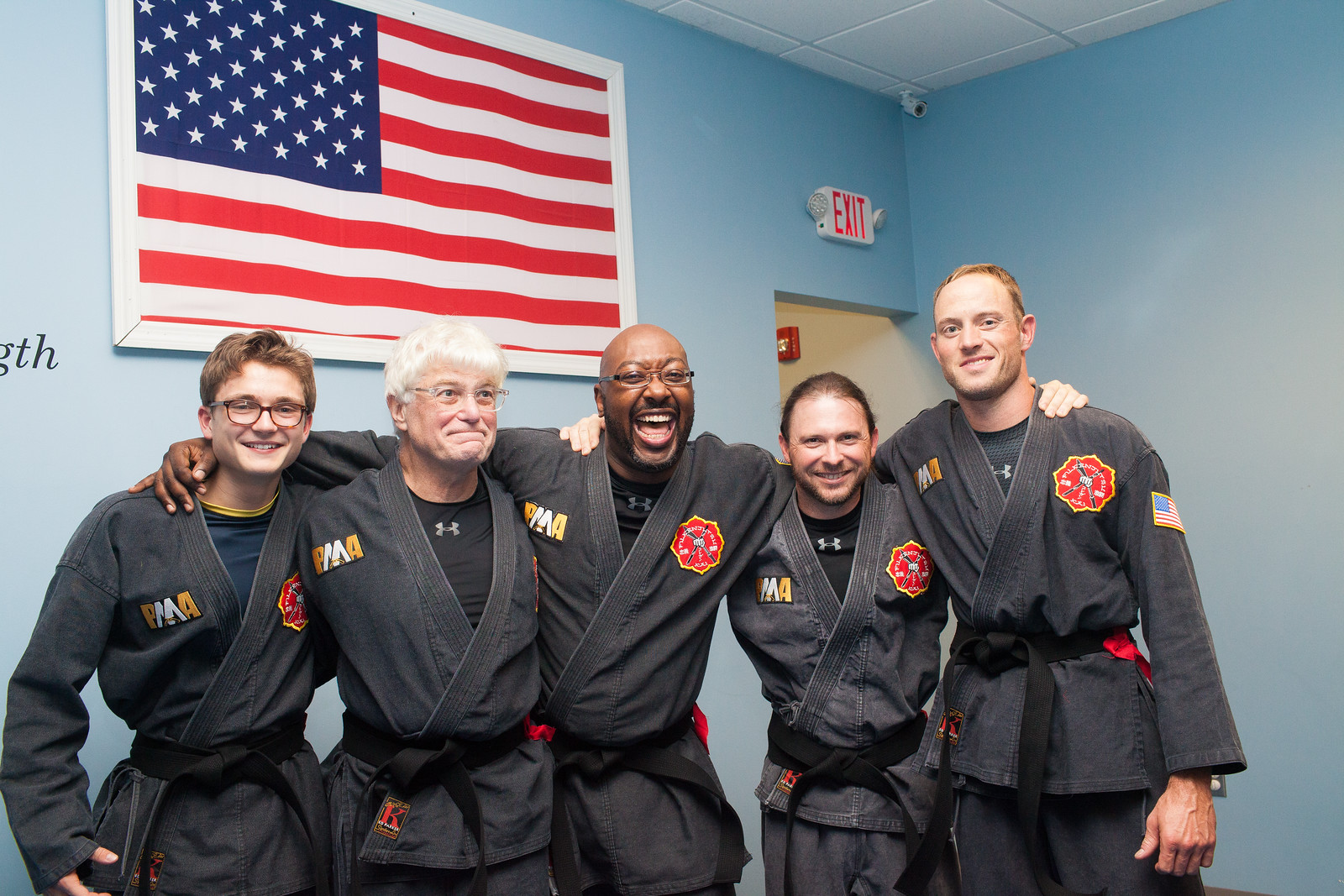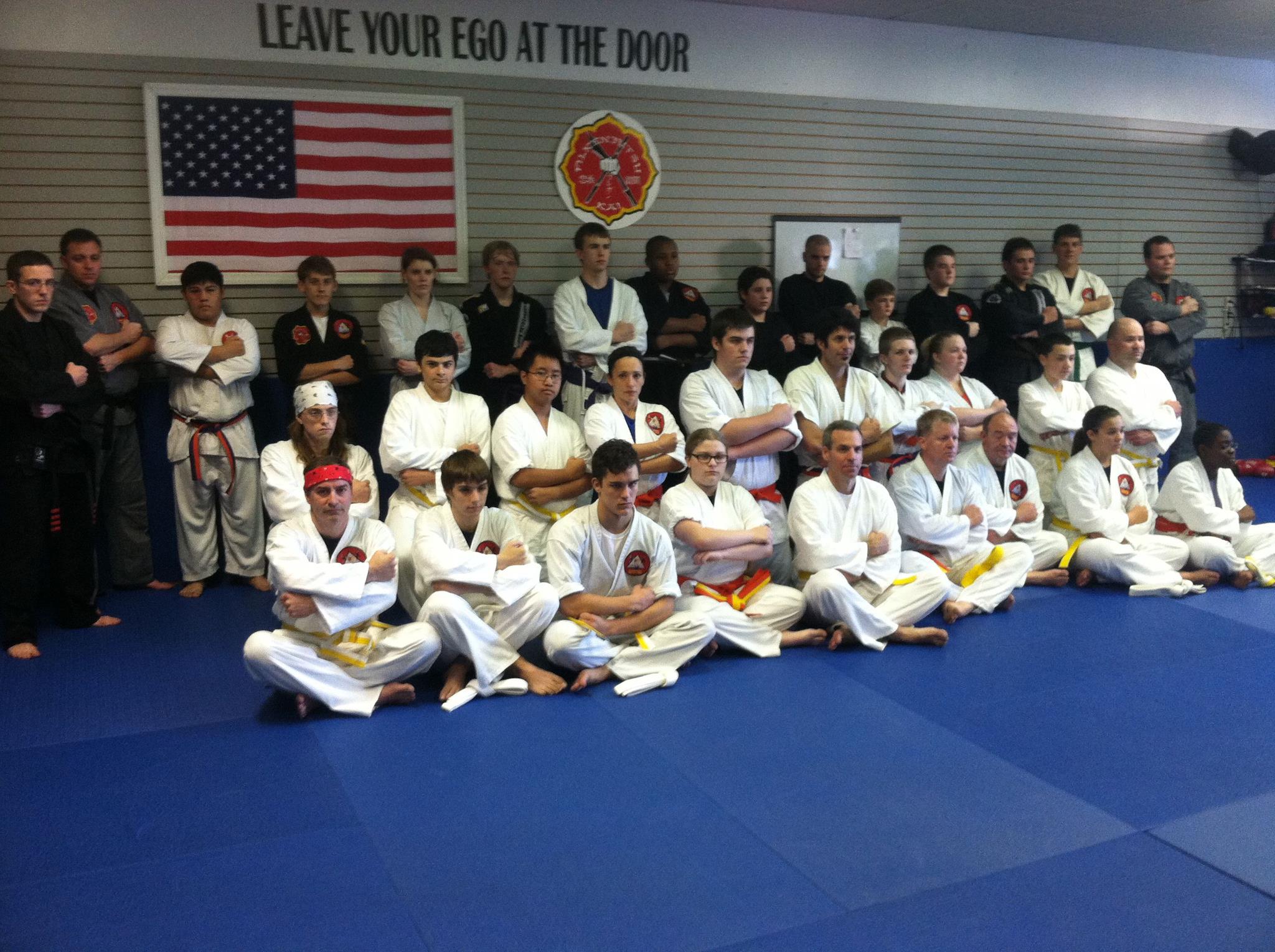What a year! There are so many great memories from this past year, but here are some of my favorites:
January 2019 - PMA hired a brand new student director, Kat Hall! Kat has been a perfect addition to the team and is so helpful to have running things at the front desk during classes.
February 2019 - We held the first of two Harry Potter nights we would have this year. These events have been some of our favorite Parents’ Night Out events yet.
March 2019 - My wife gave birth to our 3rd son, Sully!
April 2019 - PMA takes home 2nd place in the Kids and Teens Division at the 2019 NAGA Atlanta Grappling Championship for the second year in a row.
And my 3-year-old son Auggie started his formal martial arts training!
August 2019 - We brought back our Women’s Brazilian Jiu-Jitsu Class! We used to offer this class when my wife started training back in 2006, and I’m so excited to have it back on our schedule. And we have a great group of ladies to start it off!
October 2019 - PMA came in 1st place out of 59 teams to be named Overall Kids and Teens Champions at the 2019 NAGA Tennessee Grappling Championship!
November 2019 - FAMILY! I loved making this video, and it was received so well by all of you.
Thanksgiving 2019 - We held our first PMA Turkey Roll. We got together late on Thanksgiving night for a marathon session of rolling, and had a blast! This one might have to become an annual event.
December 2019 - PMA was voted “Best Karate School in Anderson County” in the Oak Ridger’s Best of Anderson County Contest. By you guys! To celebrate this fun award and PMA’s 17th anniversary, we held our first ever PMA Spirit Week during the last week of classes.
This year we promoted 5 of our youth FILKENJUSTU Kenpo students to the rank of Junior Black Belt. Grace Cardwell, Catherine Gergel, Randy Moore, Kyra Melton, and Connor Melton all reached this huge milestone and enter into the next phase of training as they continue to learn and prepare for their full Black Belt test when they turn 18.
We are extremely proud of our youth martial arts programs at PMA and all 5 of these guys are shining examples of what we are trying to do with the curriculum - both in their skill and in the way they carry themselves on and off the mat.
Here are our Top 10 songs played at PMA this year:
Quarter Life Crisis by Judah and the Lion
100 Bad Days by AJR
7000x by Judah and the Lion
Lo/Hi by The Black Keys
Over My Head by Judah and the Lion
Born to Be Yours by Kygo and Imagine Dragons
Carry On by Kygo and Rita Ora
Ready to Let Go by Cage the Elephant
Go by The Black Keys
Break My Face by AJR
I thought it would be fun to do one for our top song of each year of the decade too:
2010 - My Body by Young the Giant
2011 - Gold on the Ceiling by The Black Keys
2012 - Radioactive by Imagine Dragons
2013 - Pompeii by Bastille
2014 - First by Cold War Kids
2015 - Don’t Wanna Fight by Alabama Shakes
2016 - Don’t Let Me Down by The Chainsmokers
2017 - Feel It Still by Portugal the Man
2018 - Burn the House Down by AJR
2019 - Quarter Life Crisis by Judah and the Lion
You can stream the playlists on Apple Music at the links below if you want something to listen to in your workouts at home this week…because I know you aren’t just sitting around waiting for PMA to open back up before you exercise. RIGHT?!
PMA’s Top 10 Songs of 2019 - https://music.apple.com/us/playlist/pmas-top-songs-of-2019/pl.u-AZr9ksd7LAA
PMA’s Top Songs of the Decade - https://music.apple.com/us/playlist/pmas-top-songs-of-the-2010s/pl.u-b6X79FlLzEE
Thank you for being with us this year! And this decade! On December 31, 2009 Brittany and I got married, and not only am I celebrating my 10 year anniversary with my incredible wife this week, but I also took over as the owner of Progressive Martial Arts Academy in 2010 so this has been a whole decade of running this academy. I feel so luck every day that I walk into the dojo, and I promise to do my very best to continue to progress myself and our academy forward this next decade.
Here is the Year in Review Video one more time for those that have missed it!
See you in 2020!





























